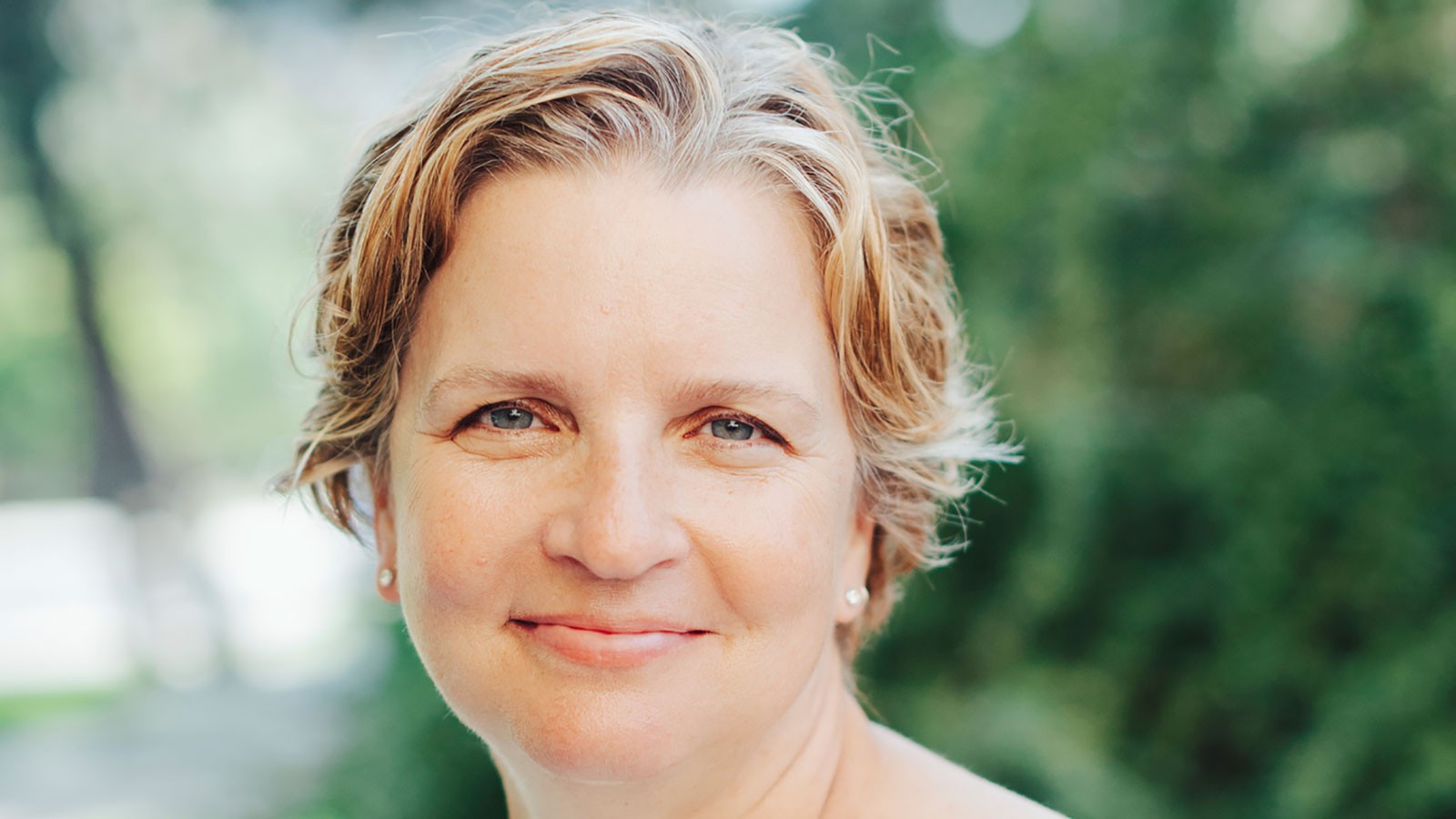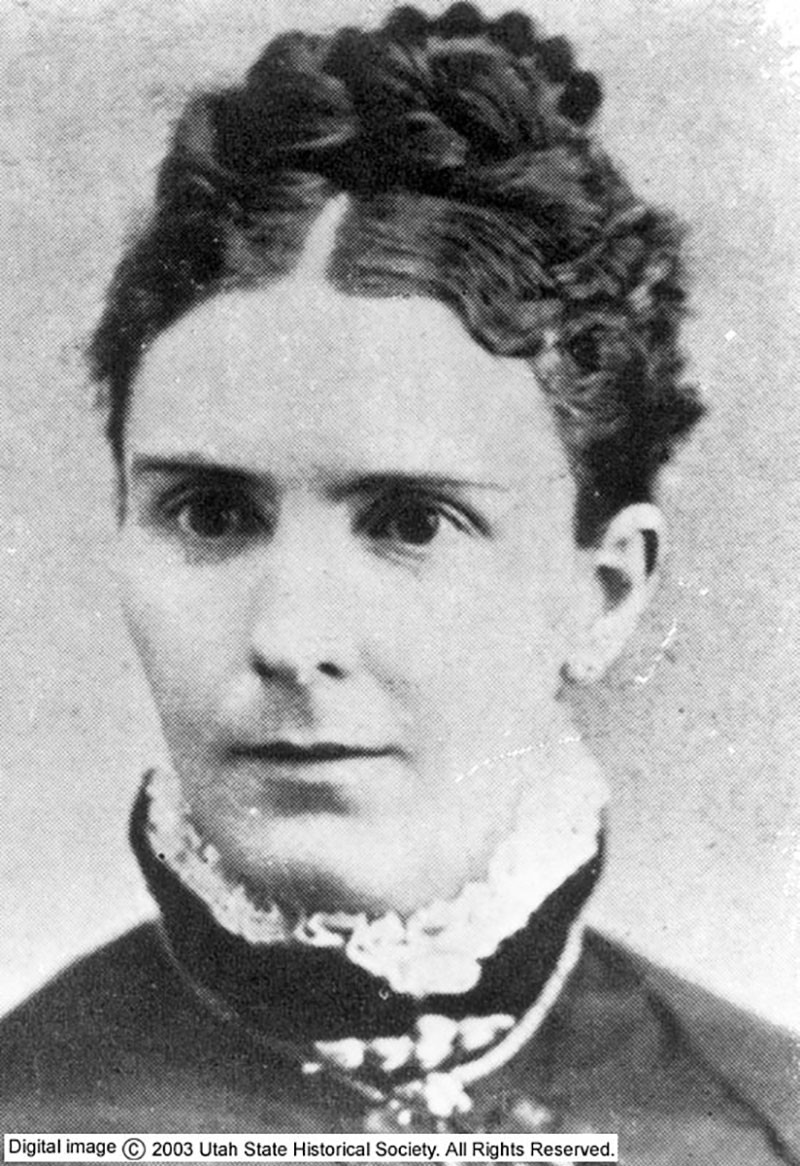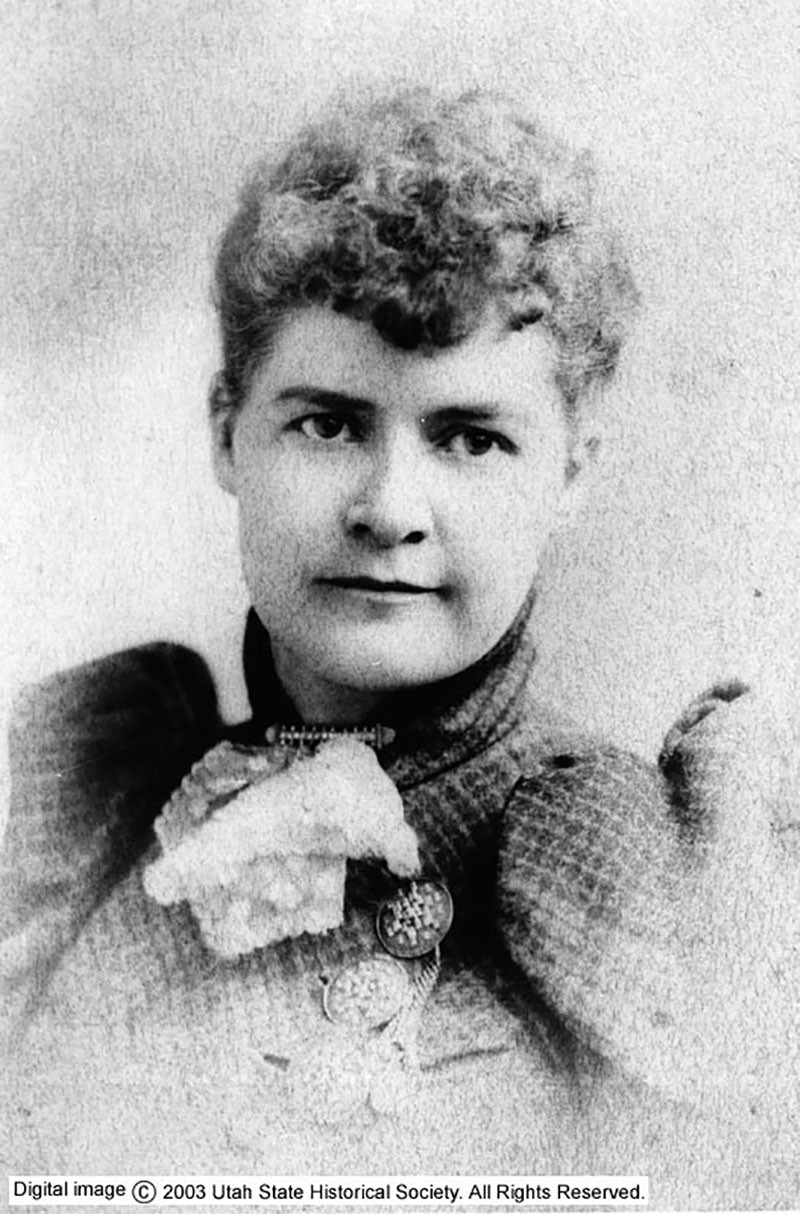Women of USU: Then and Now Women as Physicians
By Alana Miller Manesse |
After earning degrees in English and American Literature, Dr. Marion Bishop decided to switch career paths and pursue her dream of becoming a physician While at Bentley College in Massachusetts.
Each September, the American Medical Association Women Physicians Section (WPS) honors physicians who have offered their time, wisdom, and support to advance women with careers in medicine. Today, we honor our Aggie alumna who serve as physicians.
Then: Romania Pratt, Ellis Shipp, and Isabella Lambert
Utah has a remarkably early history of employing female physicians. In Utah, it was deemed improper for a male doctor to tend to the needs of female patients whether for disease or childbirth. While there were many midwives in the territory, they lacked the technical skills necessary to best treat patients. When Brigham Young began encouraging women to pursue an education in medicine in the late 19th century, women of all ages and backgrounds travelled east to become licensed medical practitioners. The first women to heed the request were Romania Pratt Penrose and Ellis R. Shipp; Isabella Lambert did the same and practiced in Logan.
Romania Pratt was a lover of music and learning. Upon hearing Brigham Young’s plea for women to educate themselves in proper medical practices, she desired to make the sacrifices necessary to pursue medicine. With an aspiration to relieve suffering, Romania sold her piano and left her children in the care of her mother to study medicine in New York. Pratt Penrose received her medical degree in 1877 at 38, becoming the first Utah woman to do so. After practicing in Salt Lake for two years, she returned to school and specialized in eye and ear care. She is credited with performing the first successful cataract operation in the Utah territory. She served on the staff of the Deseret Hospital intermittently.
Another absorbing interest in Romania’s life became women’s rights. She wrote in the Woman’s Exponent in 1879 that it was a woman’s “duty and privilege to do whatever she can that will promote the advancement and elevation of her own sex.” She felt that women should become self-sustaining.
She wrote, “In a nutshell our duties as suffragists are to inform ourselves and instruct each other in the science of government, to interest all our friends in the movement, and convert our fathers,
brothers and husbands to the fact that we can understand and wield an intelligent power in
politics, and still preside wisely and gracefully at home. After 35 years of service, Dr. Pratt Penrose finally retired in 1912 at the age of 73.
Ellis Shipp entered the Women’s Medical College of Philadelphia in 1875, leaving her husband and young children in Salt Lake. After a year of school, Shipp returned home for the summer before finishing the final 18 months of education. Upon her arrival back at medical school, Shipp discovered she was pregnant, but this did not halt her studies. Her daughter was born during the spring semester. On March 14, 1878, she received her medical degree. Dr. Shipp had great success in her medical practice and taught courses in obstetrics. With this success, the Relief Society of the Church of Jesus Christ of Latter-Day Saints requested she travel throughout the state to teach midwifery in the major settlements. Dr. Shipp trained almost 500 women in the practices of midwifery.
Isabella Lambert was one of the few women to transition from midwifery to a licensed medical doctor. She studied midwifery in Salt Lake City in 1876, before moving to Logan. Once in Logan, she began to work as a midwife. Later, she left her family and spent several years at a medical school in Iowa; she received her degree in 1893. Upon graduation, Dr. Lambert travelled through Cache Valley to provide medical care. Never forgetting her midwife beginnings, Dr. Lambert continued to use herbal remedies in addition to modern medicines. She retired from medicine in 1915.
Many other women answered the call to medicine, including Martha Hughes Cannon, also the first female senator; Margaret C. Shipp Roberts, Mary Minor Green, Emma Atkins, Mary Van Schoonhoven, and Jane M. Skolfield.
Unfortunately, the trend for women as leaders in medicine in Utah was short-lived. Ironically, although a medical school opened at the University of Utah in 1905, much closer than the Women’s Medical College in Philadelphia, there was a precipitous decline in women enrollees. It was only in the later 20th century that women students once again matriculated in significant numbers. In 2019, for the first time, women made up the majority of students in U.S. medical schools with women at 50.5 percent and men at 49.4 percent; however, Utah historically has seen lower numbers.
Now: Dr. Marion Bishop
Dr. Marion Bishop, a Cache Valley native, graduated from Utah State University in 1987 with a bachelor’s in English before moving to New York to pursue a master’s and doctorate in English and American Literature. At the completion of her doctorate, Dr. Bishop taught at the collegiate level at several universities in the eastern United States.
While at Bentley College in Massachusetts, Dr. Bishop decided to switch career paths and pursue her dream of becoming a physician. Bishop’s interest in medicine began as a youth watching her father work as a physician and later the first Emergency Room Director at Logan Regional Hospital. Growing up, Bishop was not exposed to female doctors, and she recalls thinking that “I didn’t know practicing medicine was something a girl could do.” She says that the lack of women as role models in the field and a lack of confidence led her to study English. Overcoming the fears and worries she had about attending medical school, Dr. Bishop found herself back at USU to complete her medical school prerequisites. During this time, she founded Women in Medicine, a group which encouraged women in pursue careers in the health sciences.
To many, Bishop’s change in career may seem like a major change in interests, but she says that her study of English and medicine are more alike than meets the eye. To her, English and medicine are different ways of exploring the human experience. As an English professor, Bishop wrote about the human experience, as a doctor, she is in the trenches.
Dr. Bishop attended medical school at the University of Utah and completed a three-year Emergency Medicine residency at the University of Nebraska Medical Center. Dr. Marion Bishop works as an emergency medicine physician at Cache Valley Hospital and Brigham City Community Hospital and advocates for women who are interested in medicine to follow their dreams regardless of the obstacles and pressure that may face.
Throughout her medical career, Dr. Bishop has continued to find ways to combine her passions. She has published with medical journals, and now writes about Covid-19. During the pandemic, Dr. Bishop has been sought out for clear and pragmatic advice, appearing on Utah Public Radio and being interviewed by the Salt Lake Tribune. She came to the attention of the media through a blog on what it means to be a physician and a mother during a pandemic, writing movingly of the “Faces of Covid-19.” She has written guest columns with advice on wearing masks.
According to the Utah Women & Leadership Project led by Dr. Susan Madsen, the Inaugural Karen Haight Huntsman Endowed Professor of Leadership, “Well-informed health care providers are uniquely positioned to support and strengthen girls and women over a lifetime.” Women practitioners are influential through providing quality patient care, serving as visible role models, educating their communities, mentoring, and advocating broadly to promote women’s wellbeing.
Since its earliest days, women at Utah State University have had a huge impact on the cultural, scientific, economic, and social fabric of the institution. The Year of the Woman shares these critical voices simply because their stories matter.
Resources:
- https://usustatesman.com/bishop-encourages-women-to-enter-the-medical-field/
- https://clarissafidler.wordpress.com/writingsamples/%E2%80%8Balumnispotlight1/
- https://scholarsarchive.byu.edu/cgi/viewcontent.cgi?article=6166&context=etd
- https://digitalcommons.usu.edu/cgi/viewcontent.cgi?article=1102&context=usupress_pubs
Ellis Shipp entered the Women's Medical College of Philadelphia in 1875, leaving her husband and young children in Salt Lake. After a year of school, Shipp returned home for the summer before finishing the final 18 months of education. On March 14, 1878, she received her medical degree. Image courtesy of Utah State Historical Society.
In the early days of Utah's history, many other women answered the call to medicine, including Martha Hughes Cannon (pictured), also the first female senator; Margaret C. Shipp Roberts, Mary Minor Green, Emma Atkins, Mary Van Schoonhoven, and Jane M. Skolfield. Image courtesy of Utah State Historical Society.
WRITER
Alana Miller Manesse
Research Assistant
Year of the Woman
millatimea@gmail.com
CONTACT
Joyce Kinkead
Professor, Co-Chair
Department of English
435-797-1706
joyce.kinkead@usu.edu
TOPICS
Women 209stories History 138stories Physics 99stories Year of the Woman 85storiesComments and questions regarding this article may be directed to the contact person listed on this page.











